This post may contain affiliate links. Learn more.
Whether you’re craving a bright, bold walnut pesto or would rather riff on our flexible basic pesto formula with whatever ingredients you have on hand, we’ve got you covered. Here’s how to make perfect pesto every time.
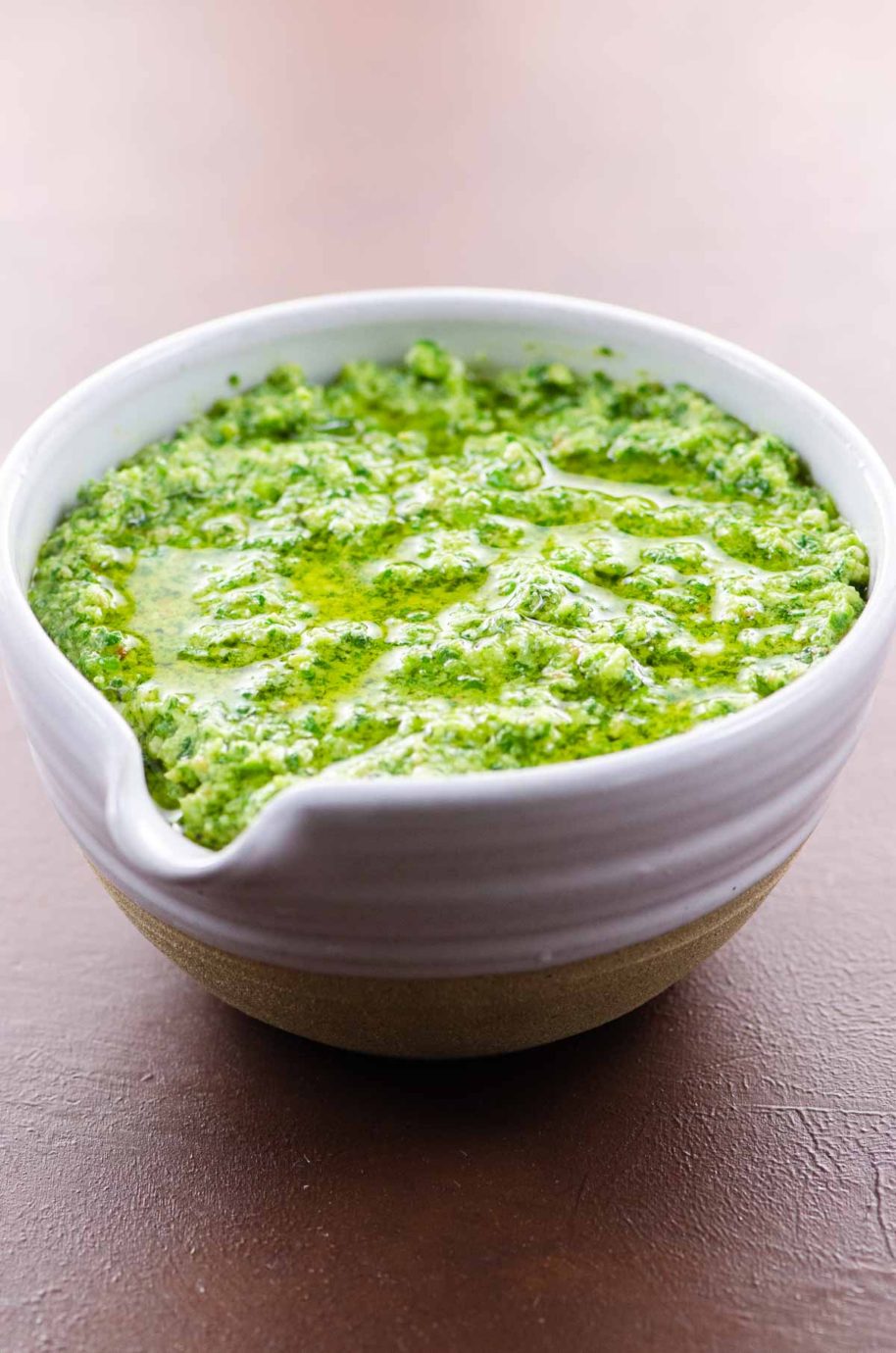
Why we love this recipe
I’m hardly exaggerating when I say I want to dive right into a bowl walnut pesto. This recipe:
- Balances the creaminess and earthiness of walnuts with
- Basil’s fresh flavors
- The deep umami of grated parmesan or pecorino
- The astringency of good olive oil
- And plenty of bright, tangy lemon juice
It’s also a really good idea to have a basic, flexible formula for pesto that can accommodate a variety of nuts, greens, and cheeses and still come out great every time.
Once you’ve got that, you’ve pretty much got a meal in your back pocket.
Ingredients
Here’s all you need to make walnut pesto. You can pop down to the section below to learn about the basic pesto formula to use other ingredients.
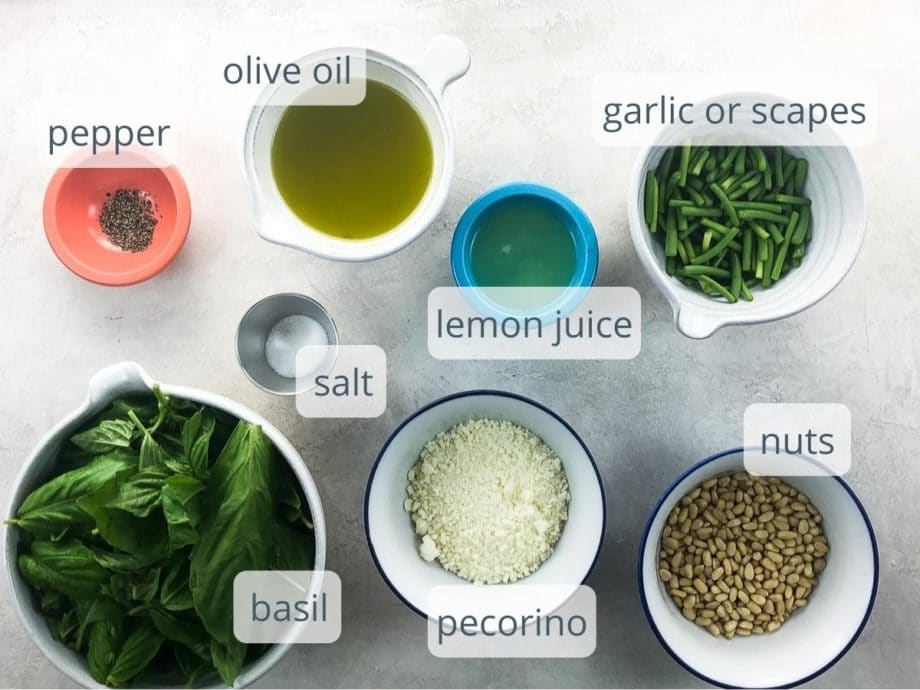
- Walnuts add an unbeatable creaminess and an earthiness to pesto. Since you’ll be chopping them up in the food processor, opt for less-expensive walnut pieces rather than whole nuts.
- Basil makes classic pesto. It’s a great one to grow rather than buy if you can. You can even do it in a container on your balcony.
- Garlic is classic and always available, but I also LOVE to swap in garlic scapes when they’re in season. Either one is great!
- Cheese — when we’re going classic, I use either parmesan or pecorino.
- This recipe uses fresh lemon juice, which adds an exceptional brightness to pesto that I really miss when it’s not there.
How to make it
Here’s all you need to do to have walnut pesto on the table in about 10 minutes. You can see all the steps in action in the video that accompanies this post.
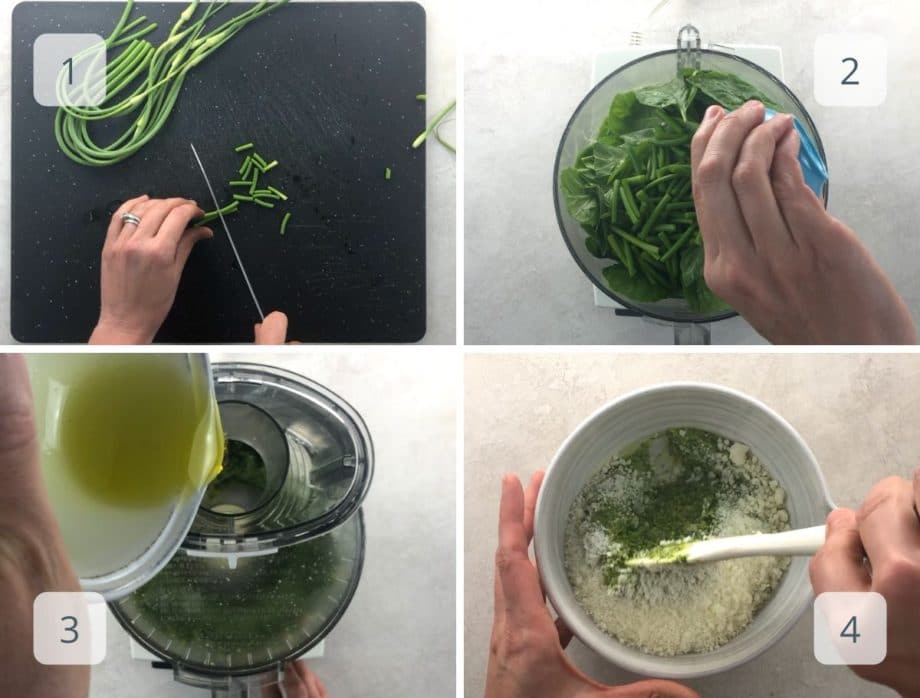
- First you’ll prep all the ingredients: chop garlic or scapes (those are scapes in the photo) // toast the nuts in a dry pan // pick the basil leaves off the stems and wash and dry them // juice the lemon // grate the cheese
- Then you’ll add all the ingredients except the oil and cheese to the food processor and pulse
- Drizzle in the oil with the motor running to help it emulsify into a creamy, dreamy pesto
- Stir in the grated cheese
A flexible basic formula for pesto
Creamy, tangy, herbaceous pesto is a beautiful way to use up the ingredients you actually have. Here are the elements you’ll need, along with some of our favorite options.
- Nuts: Use 1/2 cup of nuts, toasted in a dry pan until fragrant and lightly browned. You guys, there are SO many great options for nuts. Try pine nuts // walnuts // almonds // pistachios // pepitas // hazelnuts // pecans // brazil nuts // or a combination
- Greens: Use 6 gently packed cups of greens, and feel free to combine them. Some of our favorites: basil // ramps // arugula // spinach // flat leaf parsley // cilantro // lacinato kale // sorrel // mint
- Alliums: You need something garlicky (or garlic-ish) to make pesto glimmer. As a rough guide for quantity, try 2 tablespoons of stronger ingredients or 1/2 cup of bulkier ingredients. Some of these double as greens! Some of our favorites: garlic // garlic scapes // ramps // chives // scallion // shallot
- Acid: A little bit of acid goes a long way in pesto. It balances the other flavors and adds a delightful brightness. Use 3 tablespoons freshly squeezed juice or 1 tablespoon vinegar. Some of our favorites: lemon juice // Meyer lemon juice // lime juice // champagne vinegar // sherry vinegar
- Oil: Use a good-quality oil for pesto, since you can really taste the difference. Half a cup makes a nice, creamy pesto. Some of our favorites: extra-virgin olive oil // avocado oil // walnut oil // hazelnut oil // safflower oil (for a neutral taste)
- Cheese: Aged hard cheeses work best for both flavor and texture. Use 1/2 cup. For vegan pesto, omit the cheese or substitute a few tablespoons of nutritional yeast or a teaspoon of white miso paste (to add umami). Some of our favorites: Parmigiano-Reggiano // Pecorino // Manchego // Cave-aged Gouda // Cave-aged Gruyere // Piave Vecchio
Expert tips and FAQs
It’s really up to you! Pine nuts are super-traditional and have a nuanced, inimitable flavor profile. They can be very expensive.
Walnuts are earthier and less expensive and are also a classic ingredient in this sauce.
Both nuts make a creamy, satisfying pesto.
Pesto is at its absolute best when just made. Since it doesn’t take very long, I like to make it just before serving when possible.
That said, this recipe actually keeps very well due to its acid content, which prevents oxidation. You can make walnut pesto up to a week in advance and store it tightly sealed in the fridge. A thin layer of olive oil poured overtop before storing helps it keep even better.
Yes! It keeps well tightly sealed in the freezer for up to a year. I sometimes freeze the whole batch in a pint-size takeout container. Or freeze it in ice cube trays (and then transfer to a sealed container or zip-top bag) to use in smaller portions.
How to serve pesto
Pesto elevates so many meals. Here are some of our favorite ways to use it:
- Tossed with boiled pasta (long or short). Protip: add a little bit of the pasta cooking water to loosen it up.
- Dolloped onto a baked pasta dish like this one.
- Dolloped onto pizza (like this one or this one) either before or after baking
- Stirred into a dip like this one (or stir it into Greek yogurt or sour cream for an instant dip)
- Spooned onto cooked chicken, eggs, or fish
- Straight from the spoon (kidding/not kidding)
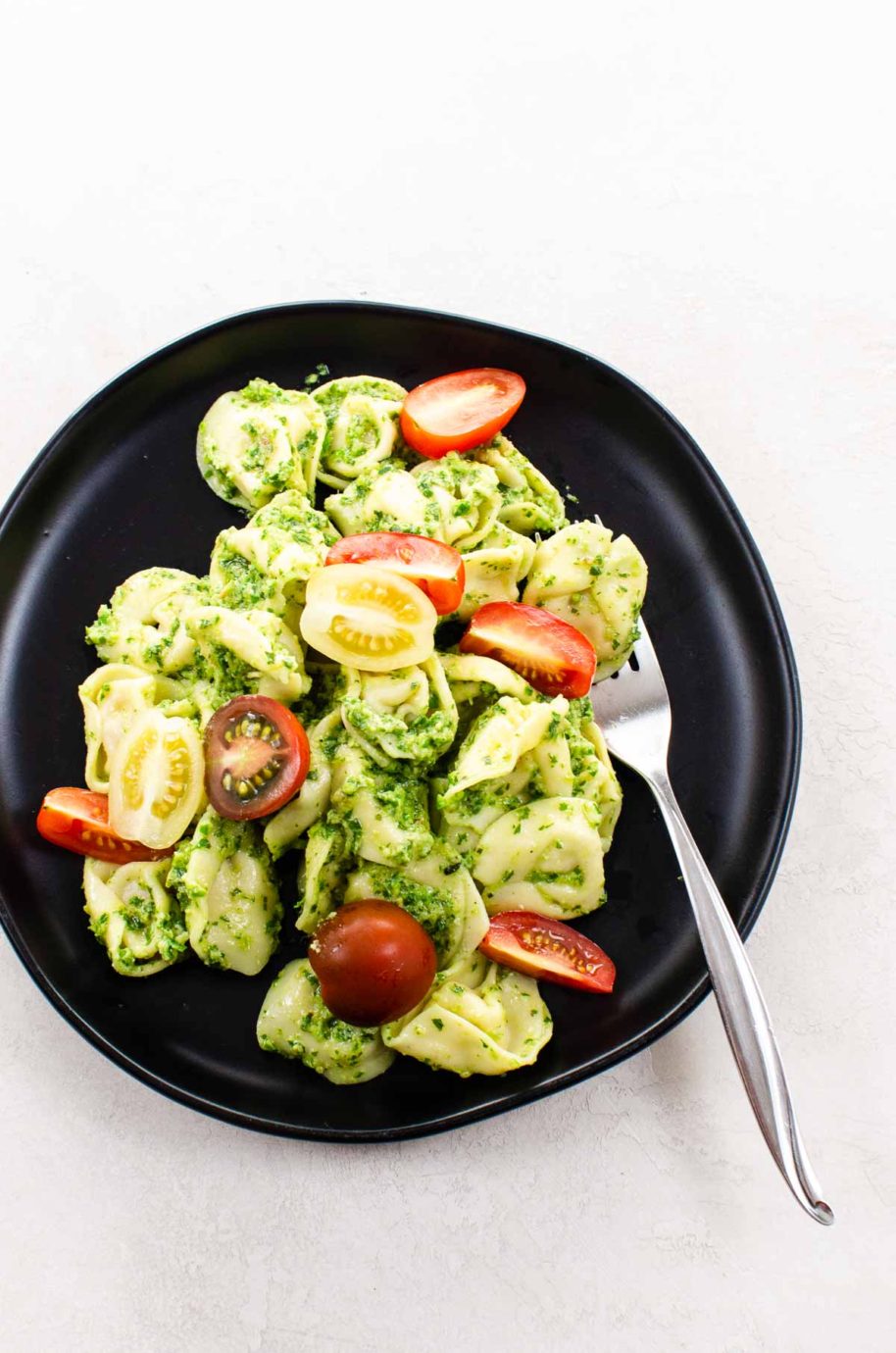
Hungry for more?
Subscribe to Umami Girl’s email updates, and follow along on Instagram.
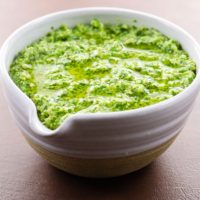
Walnut Pesto
Ingredients
- ½ cup shelled walnut pieces
- 3 large garlic cloves or 1/2 cup chopped garlic scapes
- 6 gently packed cups fresh basil leaves
- 1 teaspoon fine sea salt
- ¼ teaspoon freshly ground black pepper
- 3 tablespoons freshly squeezed lemon juice
- ½ cup extra-virgin olive oil
- ½ cup grated Parmigiano-Reggiano or Pecorino Romano cheese
Instructions
- Toast the walnuts in a small, dry pan over medium heat until they are fragrant and a little darker brown than they started out (3 to 5 minutes).
- Let cool slightly and pour into the bowl of a food processor fitted with the blade attachment.
- Add the garlic scapes or cloves, basil, salt, pepper, and lemon juice and pulse just until a thick paste forms. Stop to press any stray or stubborn basil leaves into the whirling action of the blade as necessary.
- With the motor running, pour the olive oil through the feed tube in a slow stream. Transfer pesto to a mixing bowl and stir in the grated cheese.
Notes
- If you don’t have a food processor, you can use a mortar and pestle or a mezzaluna. This is actually a more traditional method of pesto making, but it takes a lot longer.
- This pesto keeps well tightly sealed in the fridge for up to a week due to the acid content. You can cover it with a thin layer of olive oil for extra protection against oxidation.
- You can also freeze it! It keeps for up to a year. I sometimes freeze the whole batch in a pint-size takeout container. Or freeze it in ice cube trays (and then transfer to a sealed container or zip-top bag) to use in smaller portions.
- For a vegan pesto, you can omit the cheese or swap in a few tablespoons of nutritional yeast.
- Check out the post above to learn all about substitutions.
Nutrition
Nutrition information is automatically calculated, so should only be used as an approximation.
Hungry for more?
Subscribe to Umami Girl’s email updates, and follow along on Instagram.



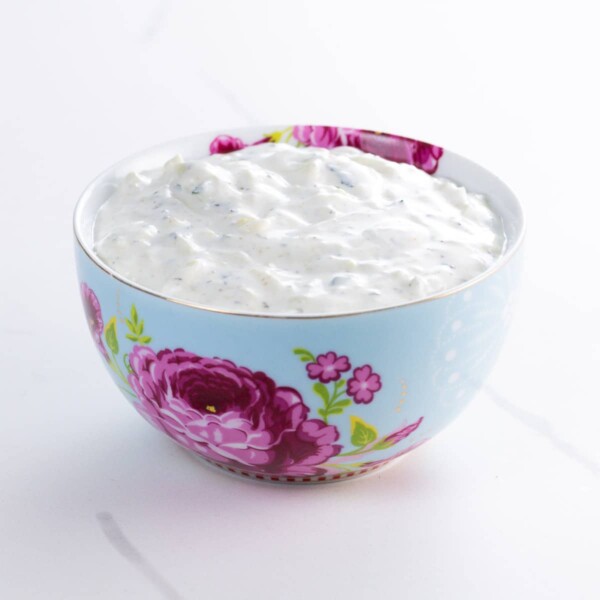
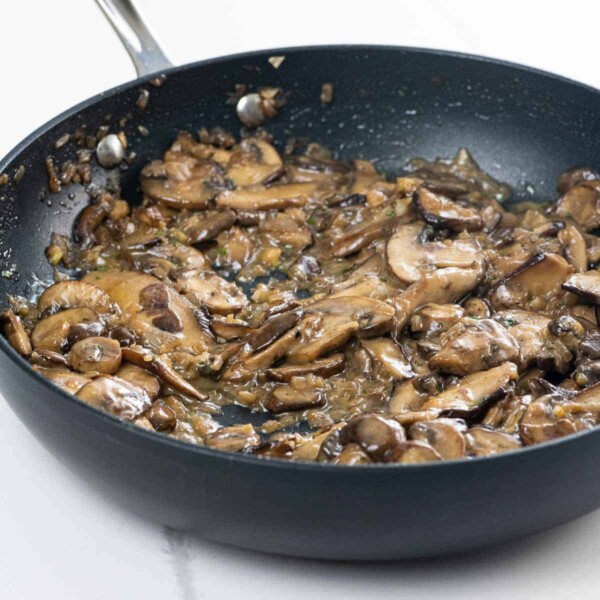
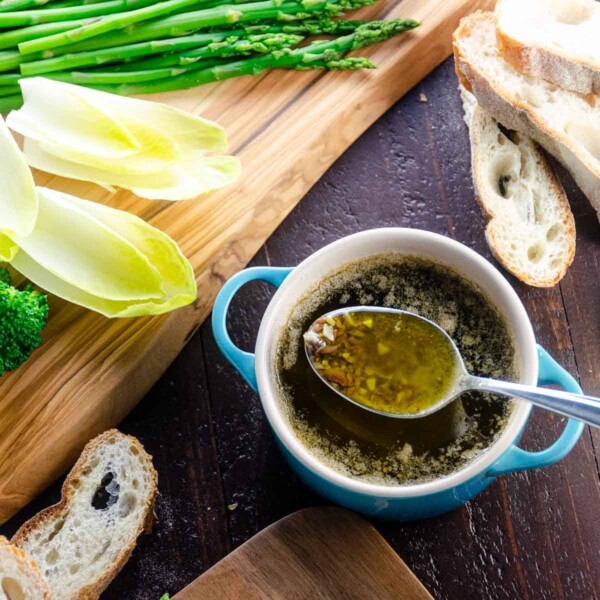
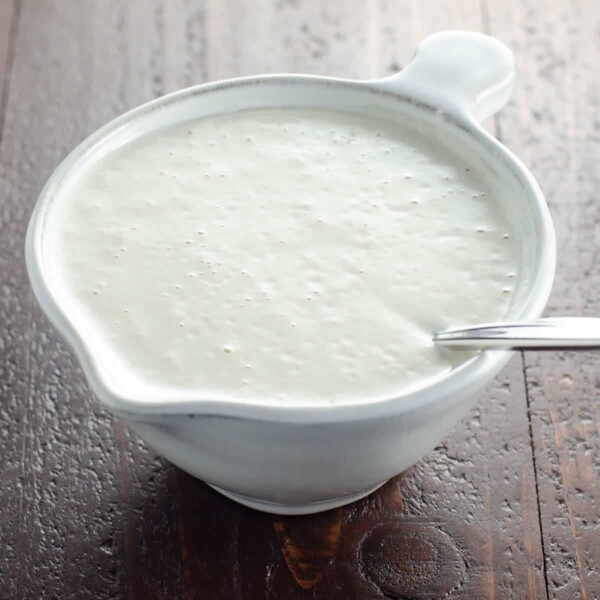







very nice